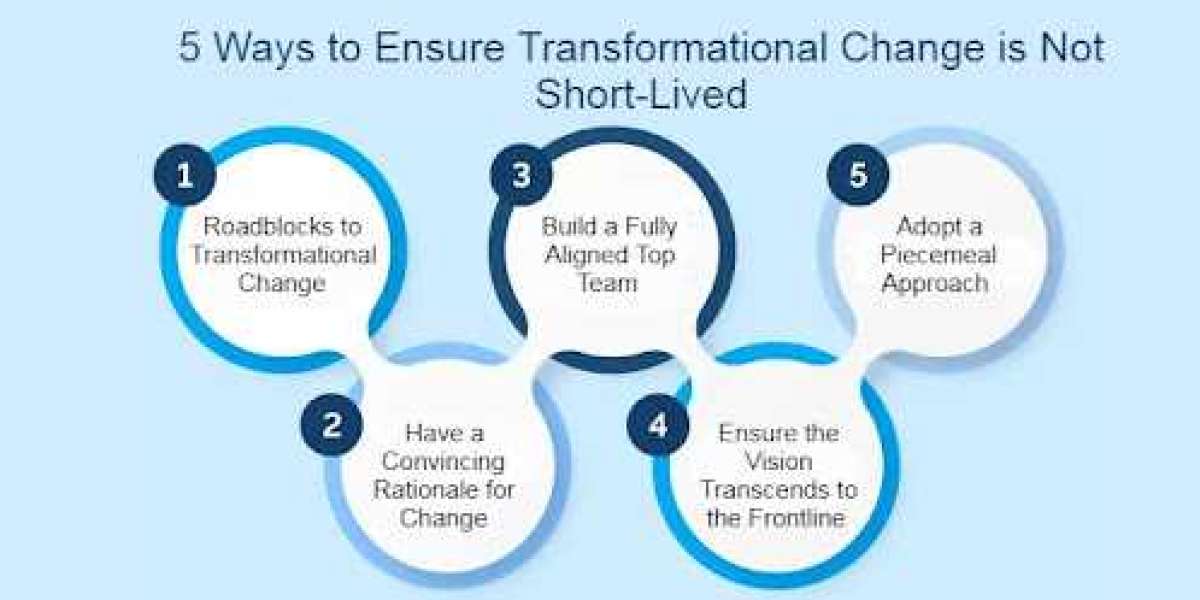Transformational leadership can weather the storm in today's rapidly changing business landscape. The pandemic revealed if top executives could see through such change. Leaders who inspired and supported their people while marrying change with agility could hit the ground running, while many others could not.
This begs the question, why is transformational change such a Goliath, and how can leaders handle it better?
- Roadblocks to Transformational Change
The problem is that even today, few leaders know how to implement transformational change demands. A study by BCG corroborates this, stating a continued decline in leader engagement during transformation. It is no surprise that the value realized from a transformation has declined significantly—from 73% in 2020 to 45% in 2022.
Further research by McKinsey shows that 70% of complex, large-scale change programs don't reach their stated goals. The reason? Poor employee engagement, no cross-functional collaboration, and an overall lack of accountability.
To drive transformational change, leaders need to be able to instill ownership in changemakers across the board. Sanjiv Bajaj, Chairman Managing Director of Bajaj Finserv and one of India's most successful business leaders demonstrates transformational leadership by saying, "The culture that we have built in our companies is the process of reinvention every three to five years. This keeps us going; it keeps the intellectual juices flowing and empowers our team. That is the excitement of working at the Bajaj Finserv companies, and that at least gives us the best chance to see that we do not get complacent with our success."
This singular approach of making change personal for every employee is what translates to the successful implementation of transformational change. How then can leaders build a culture of transformation and growth in their company? Read on to find out.
- Have a Convincing Rationale for Change
Transformational leaders must be good storytellers and convince employees to take on change as a personal journey. Instead of adopting futile slash-and-burn techniques aimed at transformation, companies should focus on growth and ensure that employees are crystal-clear about how the change will enhance their work.
More than 40% of a successful transformation's value comes from growth initiatives, according to McKinsey.
- Build a Fully Aligned Top Team
The top team leading the change must clearly agree on the transformation's goals and approach. Regularly revisiting and refining these goals based on proactive discussion is necessary to ensure success.
Studies show that company-wide change efforts are 12.4 times more likely to be successful when top changemakers in India are on the same page through regular communication.
- Ensure the Vision Transcends to the Frontline
Frontline employees are the ones carrying out change policies put forth by leadership. Leaders should make sure that their vision trickles down to frontline employees so that employees at all levels are prepared to meet the post-transformation goals.
Studies show that by instilling ownership in employees, companies are 3.8 times more likely to succeed.
- Adopt a Piecemeal Approach
Transformational change usually stems from big ideas. However, its implementation needs to be broken down into digestible steps. According to a McKinsey analysis, companies use only 29% of the metrics they claim to follow to enact change.
This shows that merely laying down a broad range of metrics is not beneficial, and the process does not need to be over complicated. Leaders should pare back and focus on implementing step-by-step change. There's value in small wins, as these allow leaders to motivate employees at every step of the way.
Moreover, it provides an opportunity to weave in incentives and other tools to maintain motivation and bring about true and lasting change.
Focus on Change Management
It is crucial not to inundate employees with too many changes at once. Leaders should instead heed their feedback and empower them to make decisions at every step of the way. This is because while strategies are made in the executive offices, employees affect these.
Research from Gartner shows that over 80% of organizations manage change from the top down. This approach does not work as currently, only one-third of change initiatives succeed. This is why companies should focus on their workforce, not executives, to lead change.
Taking a more holistic and expansive approach to transformation increases the chances that an organization will see improvement. Only highly engaged leaders dedicated to the cause and in touch with employee sentiments can attain meaningfully and sustained transformational change. Many revolutionary leaders of India, such as Azim Premji, Ratan Tata, Sanjiv Bajaj and Mukesh Ambani, have famously demonstrated that this approach will stand the test of time.








